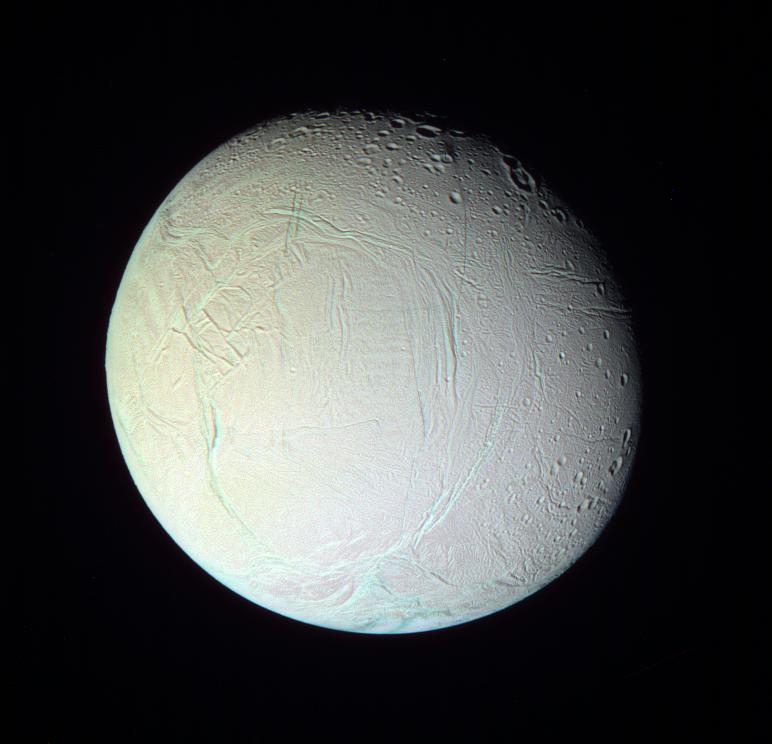Fresh Features on Enceladus (False color)

| PIA Number | PIA07708 |
|---|---|
| Language |
|
A false color look reveals subtle details on Enceladus that are not visible in natural color views.
The now-familiar bluish appearance (in false color views) of the southern "tiger stripe" features and other relatively youthful fractures is almost certainly attributable to larger grain sizes of relatively pure ice, compared to most surface materials.
On the "tiger stripes," this coarse-grained ice is seen in the colored deposits flanking the fractures as well as inside the fractures. On older fractures on other areas of Enceladus, the blue ice mostly occurs on the exposed wall scarps.
The color difference across the moon's surface (a subtle gradation from upper left to lower right) could indicate broad-scale compositional differences across the moon's surface. It is also possible that the gradation in color is due to differences in the way the brightness of Enceladus changes toward the limb, a characteristic which is highly dependent on wavelength and viewing geometry.
See PIA07709 for a monochrome version of this view.
Terrain on the trailing hemisphere of Enceladus (505 kilometers, or 314 miles across) is seen here. North is up.
The view was created by combining images taken using ultraviolet, green and infrared spectral filters, and then was processed to accentuate subtle color differences. The images were taken with the Cassini spacecraft narrow-angle camera on Jan. 17, 2006 at a distance of approximately 153,000 kilometers (95,000 miles) from Enceladus and at a Sun-Enceladus-spacecraft, or phase, angle of 29 degrees. Image scale is 912 meters (2,994 feet) per pixel.
The Cassini-Huygens mission is a cooperative project of NASA, the European Space Agency and the Italian Space Agency. The Jet Propulsion Laboratory, a division of the California Institute of Technology in Pasadena, manages the mission for NASA's Science Mission Directorate, Washington, D.C. The Cassini orbiter and its two onboard cameras were designed, developed and assembled at JPL. The imaging operations center is based at the Space Science Institute in Boulder, Colo.
For more information about the Cassini-Huygens mission visit http://saturn.jpl.nasa.gov . The Cassini imaging team homepage is at http://ciclops.org .
